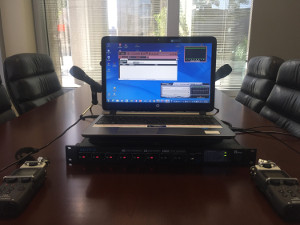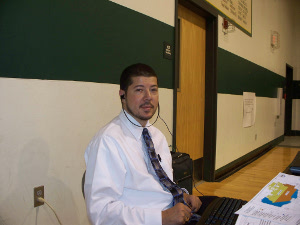Digital Court Reporters
When ordering a digital court reporter, ensure that your reporter is certified through the American Association of Electronic Reporters and Transcribers (AAERT).
Electronic Reporting

Digital court reporting, also referred to as electronic court reporting, has made its way across the United States, thanks to advancements in digital recording. Digital reporting involves the use of professional-level audio recording systems. Digital reporting involves two elements: The electronic court reporter who oversees the process, and secondly, the sound recording process itself.
At all times, the electronic recording equipment is overseen by an experienced digital reporter, who also takes simultaneous notes of the proceedings. The digital annotations are time-linked to the corresponding audio, so one can go instantly to that point in the record to re-listen to the actual testimony.
Speaker Identification
Primary participants are assigned to separate, discrete sound channels. So when two or more parties overlap and talk at the same time, digital reporting captures each voice clearly on its own separate sound channel. This voice isolation feature permits a full and accurate transcription of exactly what was said -- and who said it -- because each channel can be listened to separately. The digital reporter rarely, if ever, needs to instruct speakers to slow down their speech, or repeat testimony because of an accent or because complex medical/technical terms are being used. The recording process captures all words exactly as spoken, and in the transcription process the audio can be replayed as needed to verify verbatim accuracy.

The reporter's log notes automatically link to their corresponding points in the digital recording, which speeds and simplifies replaying portions of the record when requested. Both log notes and audio files can be transmitted over the Internet, reducing or eliminating shipping costs and delivery delays.
The digital recording equipment, which includes a number of strategically placed microphones and video recorders throughout the hearing room, is generally hardwired. Digital reporters provide the computer and backup audio recording devices, microphones, and software for each assignment. Digital court reporters are responsible for operating the equipment and taking down "log notes" during the proceedings. The digital reporter creates log notes of speaker identification and keywords, which serve as a general outline of the digital recording, for ease of transcription afterwards.
Electronic Reporting Clients
- Kaiser Permanente - EEOC Hearings
- California Horse Racing Board - Board Meetings
- Regional Water Quality Board - Board Meetings
- The Veterans Administration - Interviews and EEOC Hearings
- State Allocation Board - Meetings

